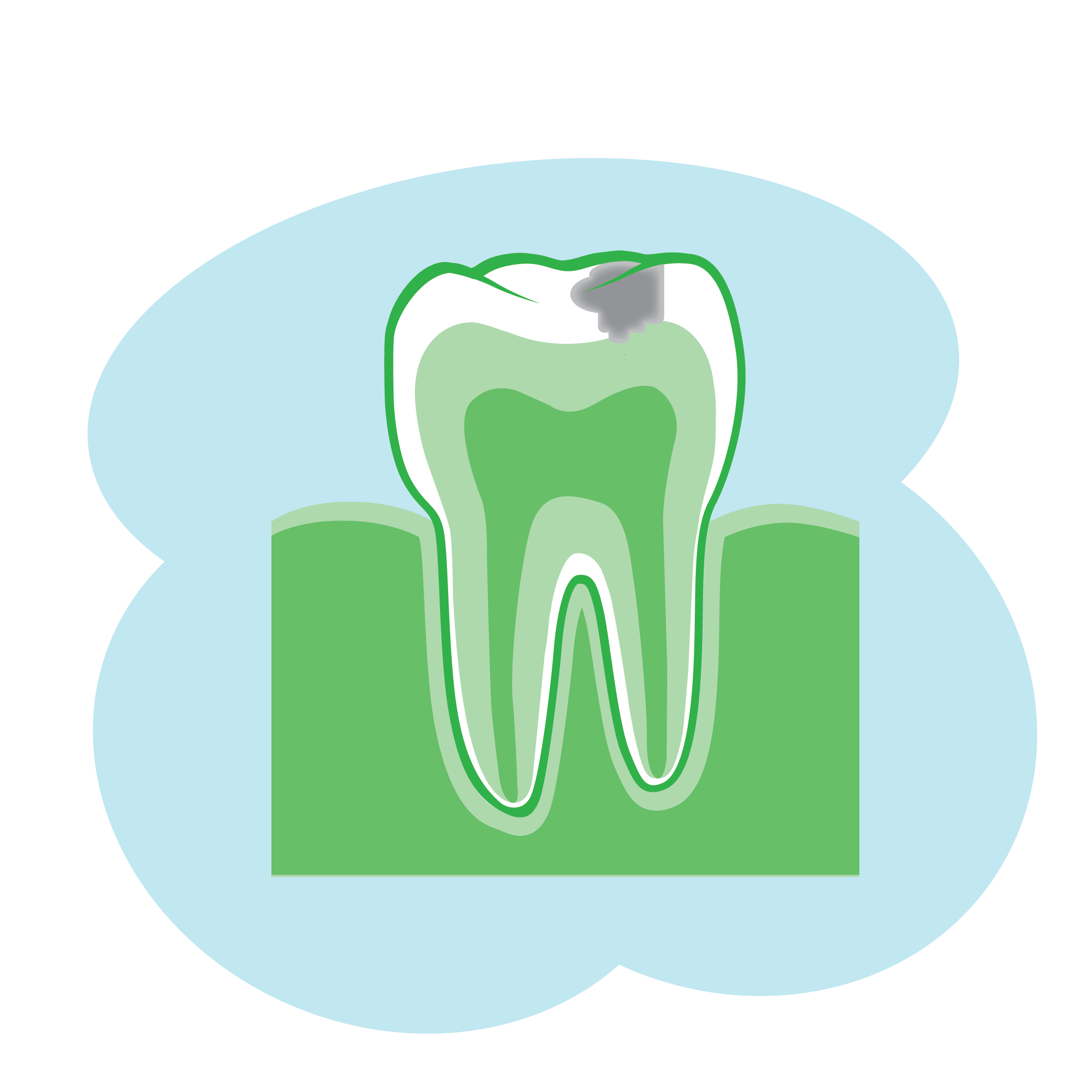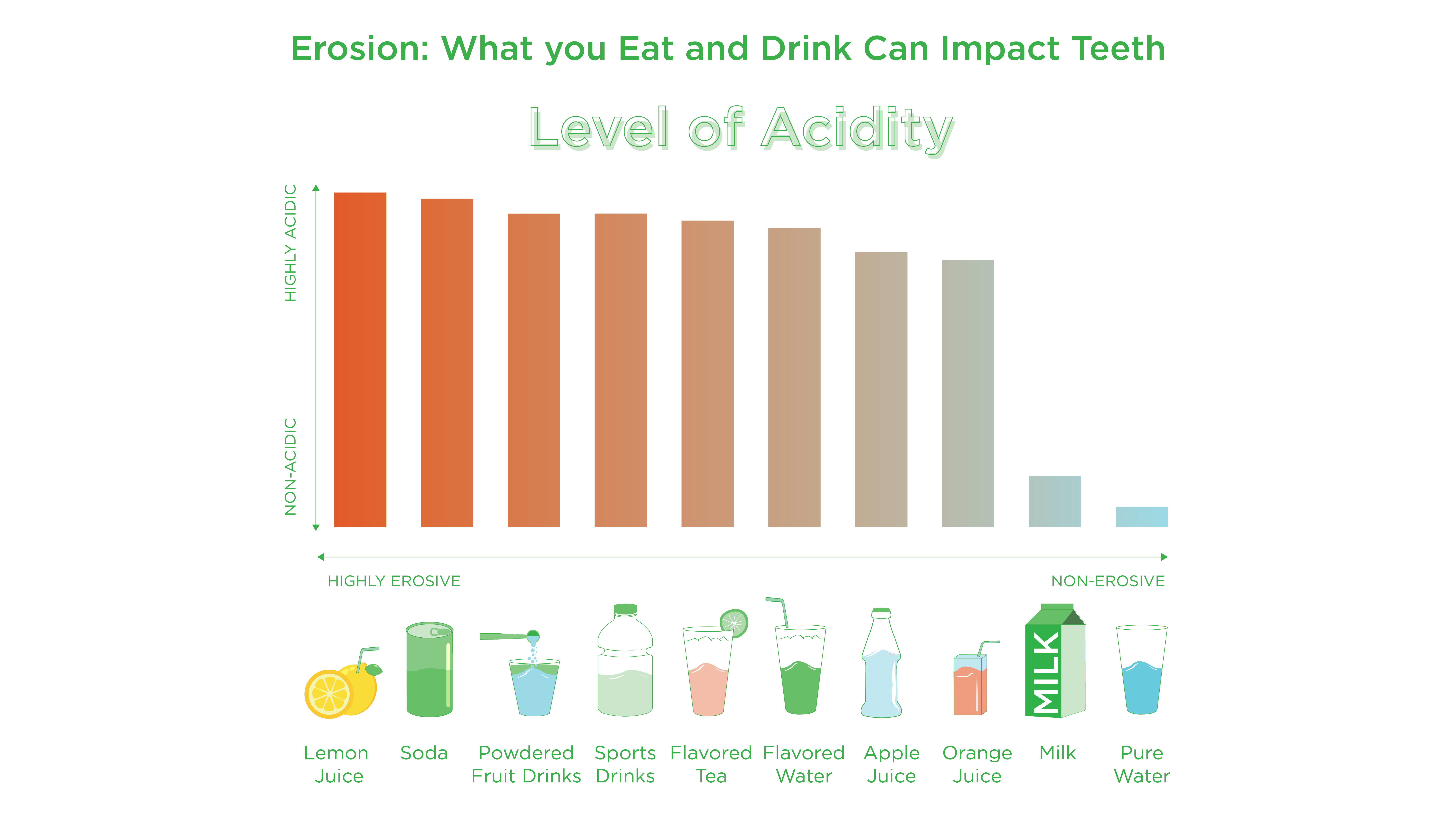
Enamel (the outer covering of teeth) is the hardest substance in your body— it’s even harder than bone. Still, you should know that there is one thing that can erode enamel and that is acid. Many foods and beverages create an acidic environment in your mouth that can cause decay and erosion of enamel over time. Long term erosion leads to holes in your enamel, also known as cavities.
Certain liquids contribute to tooth decay because of their pH or acid content. Liquids with lower pH contain more acid, so they are more damaging to enamel. Water is neutral with a pH of 7, which makes it the healthiest drink for oral and overall health. Dairy drinks (plain, low-fat or fat-free cow's milk) and dairy alternatives (almond milk without added sugar) are the next healthiest options. Juice can be quite acidic, especially citrus juices like orange and grapefruit. Unsweetened coffee and tea are also acidic and can cause damage to enamel when combined with sugar. Sugar-sweetened beverages like soda are some of the most acidic liquids.

Drinks that are popular or trendy for being “healthy” options are not always the safest for your teeth. Kombucha (fermented black or green tea that is carbonated and sweetened) has a sweet and sour taste similar to apple cider vinegar, which comes from the acid in the drink. Since they are very acidic, they can be as harmful to teeth as soda.
Here are a few ways you can help protect your enamel from damage caused by acidic drinks:
- Have acidic drinks in moderation.
- Rinse your mouth or drink water after finishing acidic drinks. This helps adjust the pH that your teeth are exposed to. The American Dental Assocation recommends drinking a glass of water or chewing sugar-free gum and waiting for one hour after eating to brush your teeth.
- If you are going to have an acidic beverage, drink it along with a meal to help minimize the contact with and impact of the acid on your enamel.
- When you drink something acidic, use a straw to help reduce the contact of the liquid on your teeth.
This information in this post is for general educational purposes only and does not warrant or represent any information as related to health as specifically appropriate for you. It is not intended to be medical advice or replace the relationship that you have with your health care providers. You should always seek medical advice on any diagnosis or treatment from a qualified health care provider. The information is provided “as is” without any representations or warranties, express or implied.






